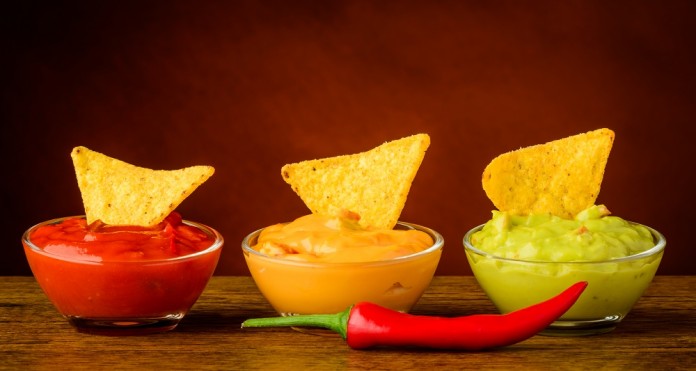Abstract:
Double dippers beware. Like kissing, more surprises await you than you would realize. Recent studies have shown that the transmission of bacteria from the mouth to foods (or other people) occurs readily, and should be approached with caution.
Main article:
What do kissing under the mistletoe and enjoying delicious party food have in common? Besides the fact that too much wine may lead to overindulgence of both, they also have the potential to spread bacteria (germs) and viruses that can make you sick.
600 different varieties of bacteria like to call your mouth home
The mouth is the perfect combination of hard surfaces, moisture and warm temperatures to grow and nurture bacteria. In fact, scientists have discovered more than 600 different varieties of bacteria that like to call your mouth home. In those with good oral hygiene (regular brushing and flossing), there can be 1,000 to 100,000 bacteria on each tooth; in those with not-so-good oral care, that number can be as high as 1 billion. Of course, not all bacteria are bad. Most are beneficial to healthy oral tissue.
The bacteria found in a human mouth are not typically found in other parts of the body. Once outside of the mouth, oral bacteria are capable of becoming pathogenic (capable of causing disease). The most common bacteria in saliva is Streptococcus. Most species of Streptococcus live benignly in the mouth, but other species can be responsible for diseases, such as strep throat, meningitis and bacterial pneumonia. Saliva can also transfer viruses, like influenza and the common cold.
IN one 10-second kiss, a total of 80 million bacteria were transferred from one partner to the other
In a 2014 study, Remco Kort and his team from the Netherlands Organization for Applied Scientific Research (TNO) discovered that in one 10-second kiss, a total of 80 million bacteria were transferred from one partner to the other. His subjects were asked to exchange an “intimate” kiss involving full tongue contact. Hopefully playful party kisses aren’t quite so intense, but, hey, you never know.
In another study, a group of undergraduate students at Clemson University put double dipping to the test with crackers and various types of dip. Their results revealed that saliva and bacteria do in fact transfer from the mouth to the cracker and then from the cracker to the dip when someone double dips. With 3 to 6 successive double dips, about 10,000 bacteria would be transferred from the eater’s mouth to the remaining dip.
So, should you avoid the mistletoe and the party platters? Probably yes. I mean, you wouldn’t likely kiss the guy (or gal) hanging out under mistletoe under any other circumstances, and avoiding the dip would be a good benefit for both your health and waistline. But parties are supposed to be fun, and sometimes it’s good to cut loose! If you’re going to indulge, keep it clean:
» Go for the cheek kiss
» Scoop your dip onto your own plate (and watch to make sure others are doing the same)
» After the party, make sure you brush and floss your teeth to wash away any bad bacteria that may have slipped in there

References:
Crombie, William J. (2002). “Discovering who lives in your mouth: Bacteria give clues to cancer and gum disease [Article in the Harvard Gazette]. Retreived from http://news.harvard.edu/gazette/2002/08.22/01-oralcancer.html
Dawson, Paul (2015, November 25). “Is Double-dipping a Food Safety Problem or Just a Nasty Habit?” [Article in Scientific American]. Retrieved from http://www.scientificamerican.com/article/is-double-dipping-a-food-safety-problem-or-just-a-nasty-habit/
Kort, Remco, et al (2014, November 17). “Shaping the oral microbiota through intimate kissing” Retrieved from http://microbiomejournal.biomedcentral.com/articles/10.1186/2049-2618-2-41
Stevens, Jane E., and Jack Desrocher (1997, January). “Oral ecology.” [Article in Technology Review]. Retrieved from http://cas.byu.edu/cas
Trevino, Judith et al. “Double-dipping does transfer bacteria: George was wrong!” Retrieved from https://krembanan.files.wordpress.com/2008/03/double-dipping-does-transfer-bacteria.pdf












